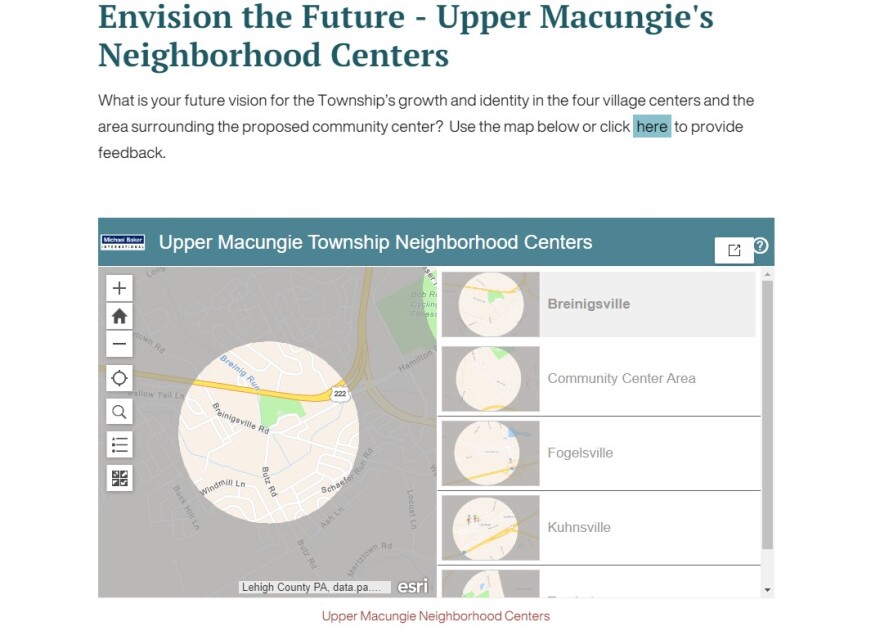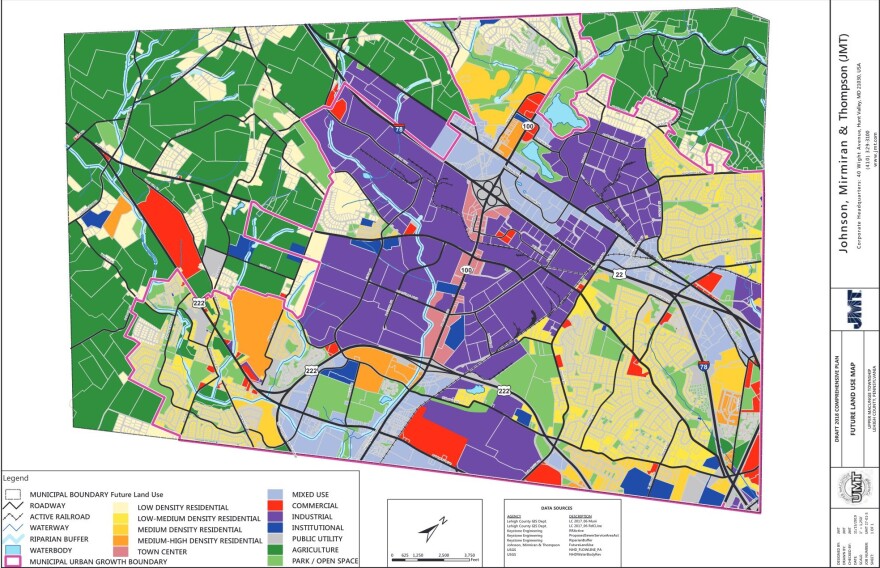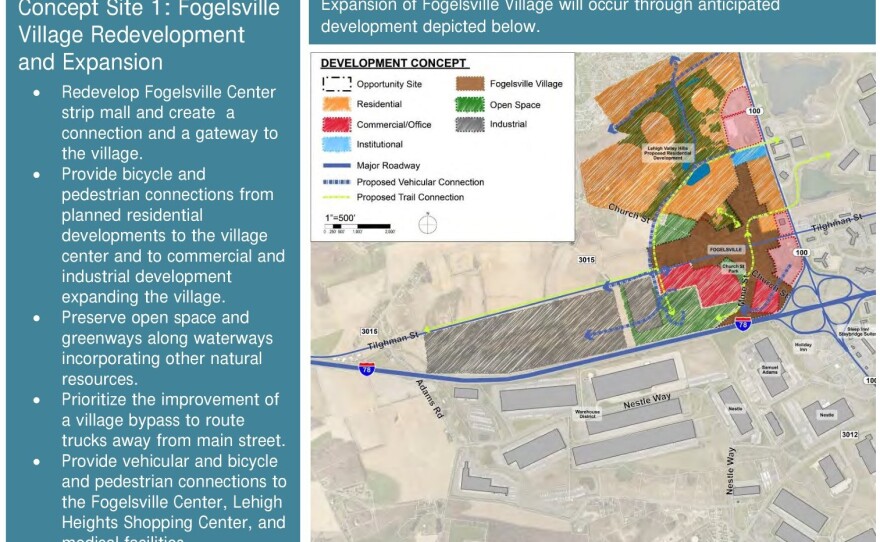UPPER MACUNGIE TWP., Pa. — Upper Macungie Township is changing its land use laws, and asking community members for their thoughts on the township’s future.
A recent post on the township Facebook page asked residents for input on how the township should change its zoning ordinance and its subdivision and land development ordinance, or SALDO.
Those laws determine which types of developments are allowed in certain areas of the township, and what they can be like.
- Upper Macungie Township is asking for community feedback during its review of its zoning ordinance and SALDO
- The review comes after the township adopted its comprehensive plan in 2019, which outlined a vision for where future efforts and developments should go and what they should be like
- The amendments to the zoning ordinance and SALDO will be based on the comprehensive plan, but could change depending on what residents say
The post linked to an interactive page made by consulting firm Michael Baker International, which is leading the township's review of its zoning ordinance and SALDO.
Residents can leave comments on an interactive map of the township about what areas they think should change or be preserved in the township.

Township Planning and Zoning Administrative Specialist John Toner III said Upper Macungie also will hold a workshop in late summer to gather public input.
Toner said township residents also are welcome to email or call the township with questions and feedback.
Why is this important?
The zoning and SALDO review comes after the township adopted a new comprehensive plan in 2019.
A comprehensive plan outlines a vision for where future efforts and developments should go and what they should be like.
Every municipality is required by the Municipal Planning Code to review the plan every 10 to 15 years.
UMT Comp Plan Chapters 4 and 5 by LVNewsdotcom on Scribd
Comprehensive plans are not enforceable by themselves. The Municipal Planning Code recommends municipalities change their zoning ordinance and SALDO after the plan is adopted to make sure its vision is followed.
Both North Whitehall and South Whitehall townships recently adopted new comprehensive plans and now are amending their zoning ordinance and SALDO.
South Whitehall Township Planner Gregg Adams said previously that participating in creation of the plan and the zoning ordinance changes was the main way South Whitehall residents could stop future development they wouldn't like.
“Once this is adopted and the zoning ordinances change, basically it's a lot harder to stop development,” Adams said in September during the process of creating the draft.
Assistant Township Manager Kalman Sostarecz said the review typically happens sooner after comprehensive plans are adopted, but the COVID-19 pandemic delayed the process.
“That's what the consultants will have to closely consider and weigh. Is what the residents are saying today more important than what was said in the [comprehensive] plan four or five years ago?”Upper Macungie Assistant Township Manager Kalman Sostarecz
Sostarecz said input from township residents still is important, even though the comprehensive plan provides a vision for the township.
The consultants may recommend the township change its zoning and SALDO based on what residents say rather than what the plan says if resident comments contradict it, Sostarecz said.
“That's what the consultants will have to closely consider and weigh,” Sostarecz said. “Is what the residents are saying today more important than what was said in the [comprehensive] plan four or five years ago?”
Warehouses in the township
Some comments on the interactive map reference the negative impacts of warehouse developments on the township.
The township has recently seen many new warehouse development projects, and citizens have raised concerns about their impact on the township.
Chapter 5 of the comprehensive plan has a section that lists sustainable land use strategies the township should follow moving forward.
“While UMT is in the path of development, it is substantially developed and is at the break point of its ability to mitigate impacts of the existing warehouse cluster and any further expansion of this cluster.”Upper Macungie Township's comprehensive plan
One of the strategies in that section is to “protect lands available for development from warehouse, distribution and logistic center development.”
“While UMT is in the path of development, it is substantially developed and is at the break point of its ability to mitigate impacts of the existing warehouse cluster and any further expansion of this cluster,” the section reads.
An earlier section of the chapter cites the “large economic gains” of the warehouse boom in the township, but said the township needs to partner with regional organizations to conduct a community impacts assessment for the impact of warehouses.
The plan also suggests conducting a fair share analysis to show that Upper Macungie already has enough warehouses, saying the township supplied 26% of industrial space in the Lehigh Valley as of 2019.
The plan cites worsening air quality, noise and light from operations, heavy truck traffic, congested roadways, roadway improvement costs and impacts on storm water and water quality as reasons to limit their development.
Housing and mixed-use developments
Chapter 4 of the comprehensive plan is about the community character and design of the township.
“The intent is to strike a balance between the suburban and rural character or UMT while strengthening the local and regional economy,” the plan reads.
The plan includes several “concept sites,” or areas that could be developed further in the future, with corresponding maps for how they could be developed.
In general, the comprehensive plan suggests clustered housing developments rather than traditional sprawled subdivisions could help the township preserve open space and agricultural land.
The plan also identifies mixed-use developments as a way to diversify the economic base of the township and the township should work to provide housing for all income levels.
To read the entire comprehensive plan, visit the township website.





